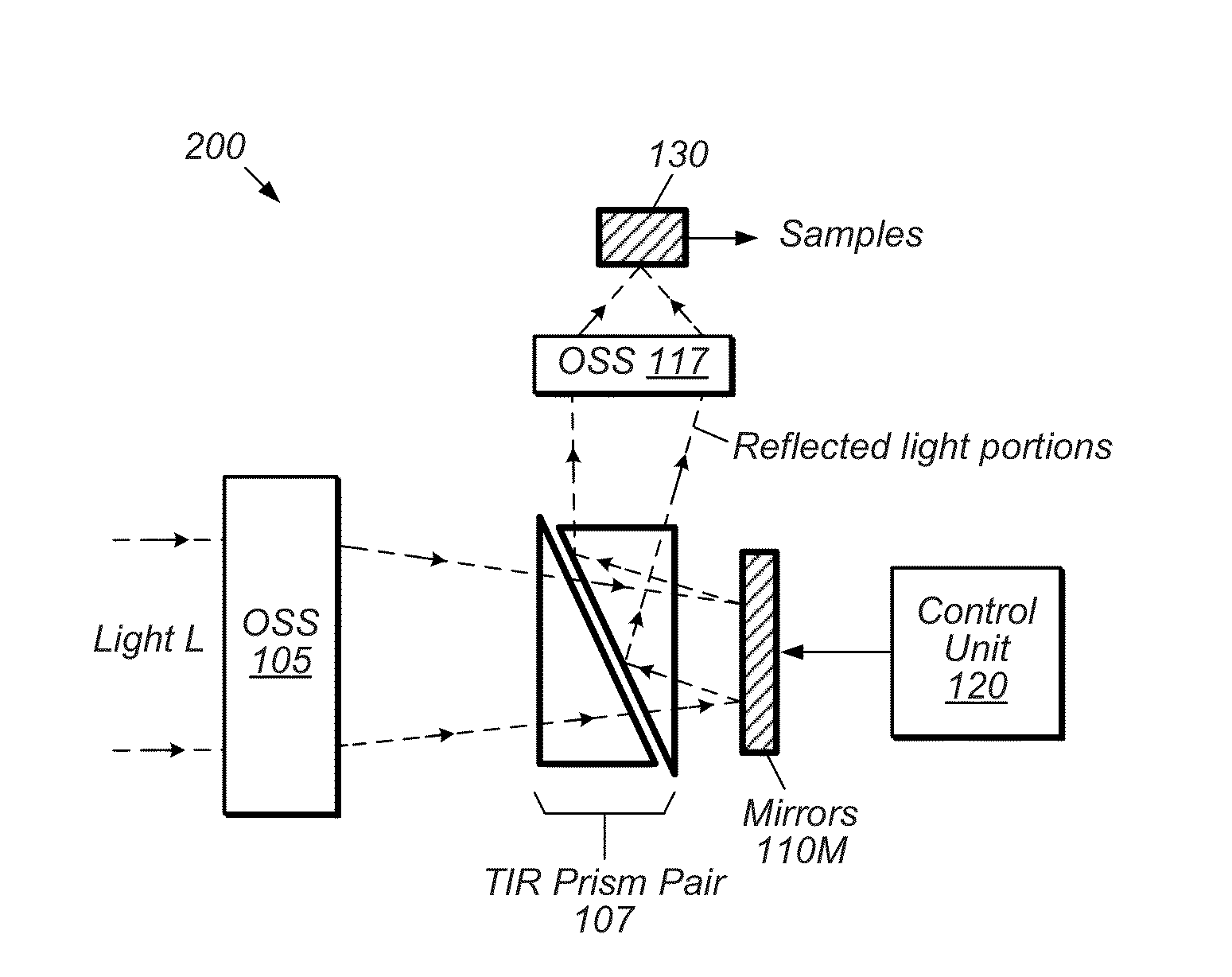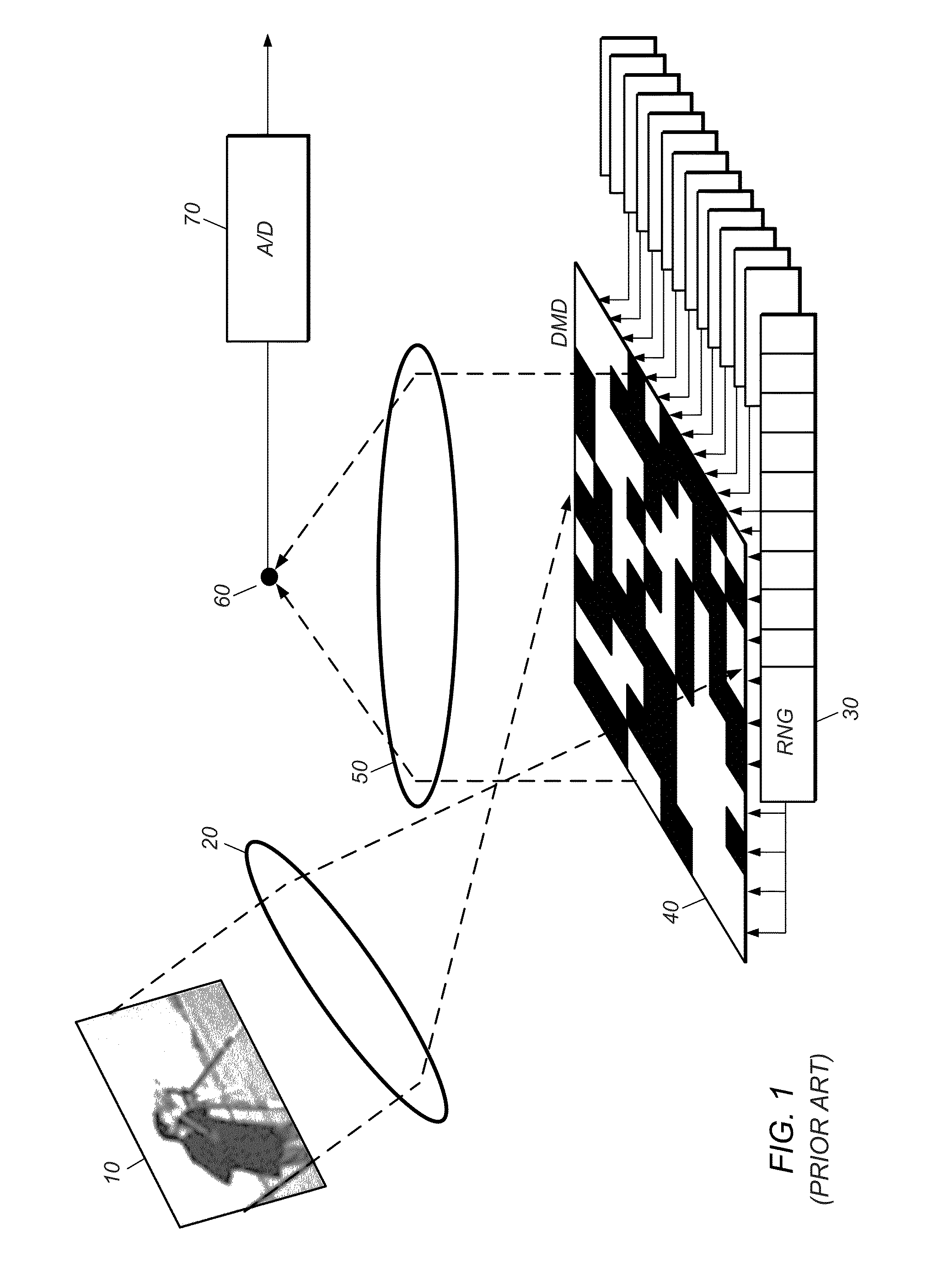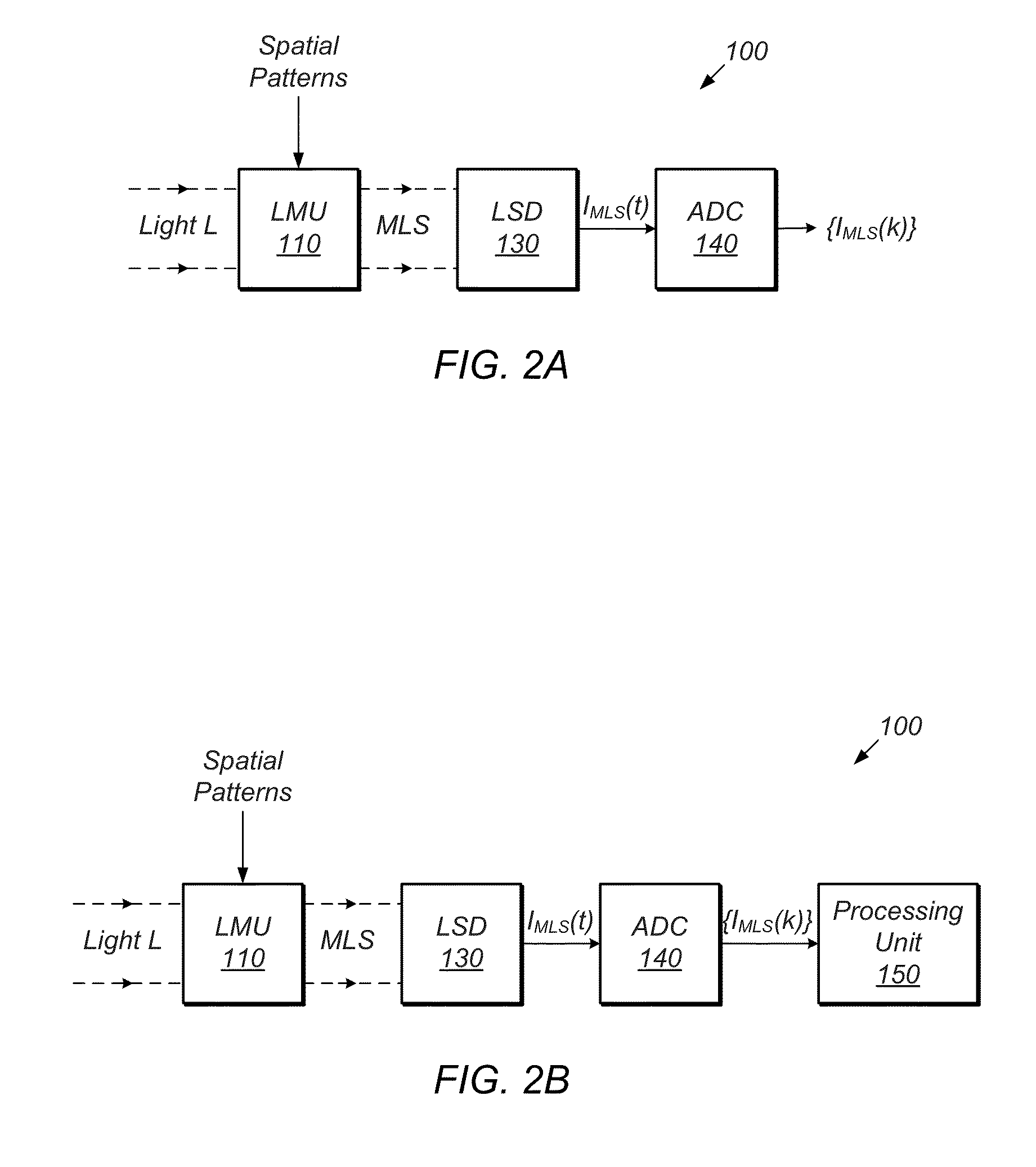Adaptive Sensing of a Programmable Modulator System
a programmable modulator and adaptive sensing technology, applied in the field of compressive sensing, can solve the problems of overwhelming data volume and large number of samples generated
- Summary
- Abstract
- Description
- Claims
- Application Information
AI Technical Summary
Benefits of technology
Problems solved by technology
Method used
Image
Examples
Embodiment Construction
Incorporations by Reference
[0037]The following documents are hereby incorporated by reference in their entireties as though fully and completely set forth herein.
[0038]U.S. patent application Ser. No. 13 / 207,900, filed Aug. 11, 2011, entitled “TIR Prism to Separate Incident Light and Modulated Light in Compressive Imaging Device”, invented by McMackin and Chatterjee;
[0039]U.S. patent application Ser. No. 13 / 197,304, filed Aug. 3, 2011, entitled “Decreasing Image Acquisition Time for Compressive Imaging Devices”, invented by Kelly, Baraniuk, McMackin, Bridge, Chatterjee and Weston;
[0040]U.S. patent application Ser. No. 14 / 106,542, filed Dec. 13, 2013, entitled “Overlap Patterns and Image Stitching for Multiple-Detector Compressive-Sensing Camera”, invented by Herman, Hewitt, Weston and McMackin.
Terminology
[0041]A memory medium is a non-transitory medium configured for the storage and retrieval of information. Examples of memory media include: various kinds of semiconductor-based memo...
PUM
 Login to View More
Login to View More Abstract
Description
Claims
Application Information
 Login to View More
Login to View More - R&D
- Intellectual Property
- Life Sciences
- Materials
- Tech Scout
- Unparalleled Data Quality
- Higher Quality Content
- 60% Fewer Hallucinations
Browse by: Latest US Patents, China's latest patents, Technical Efficacy Thesaurus, Application Domain, Technology Topic, Popular Technical Reports.
© 2025 PatSnap. All rights reserved.Legal|Privacy policy|Modern Slavery Act Transparency Statement|Sitemap|About US| Contact US: help@patsnap.com



